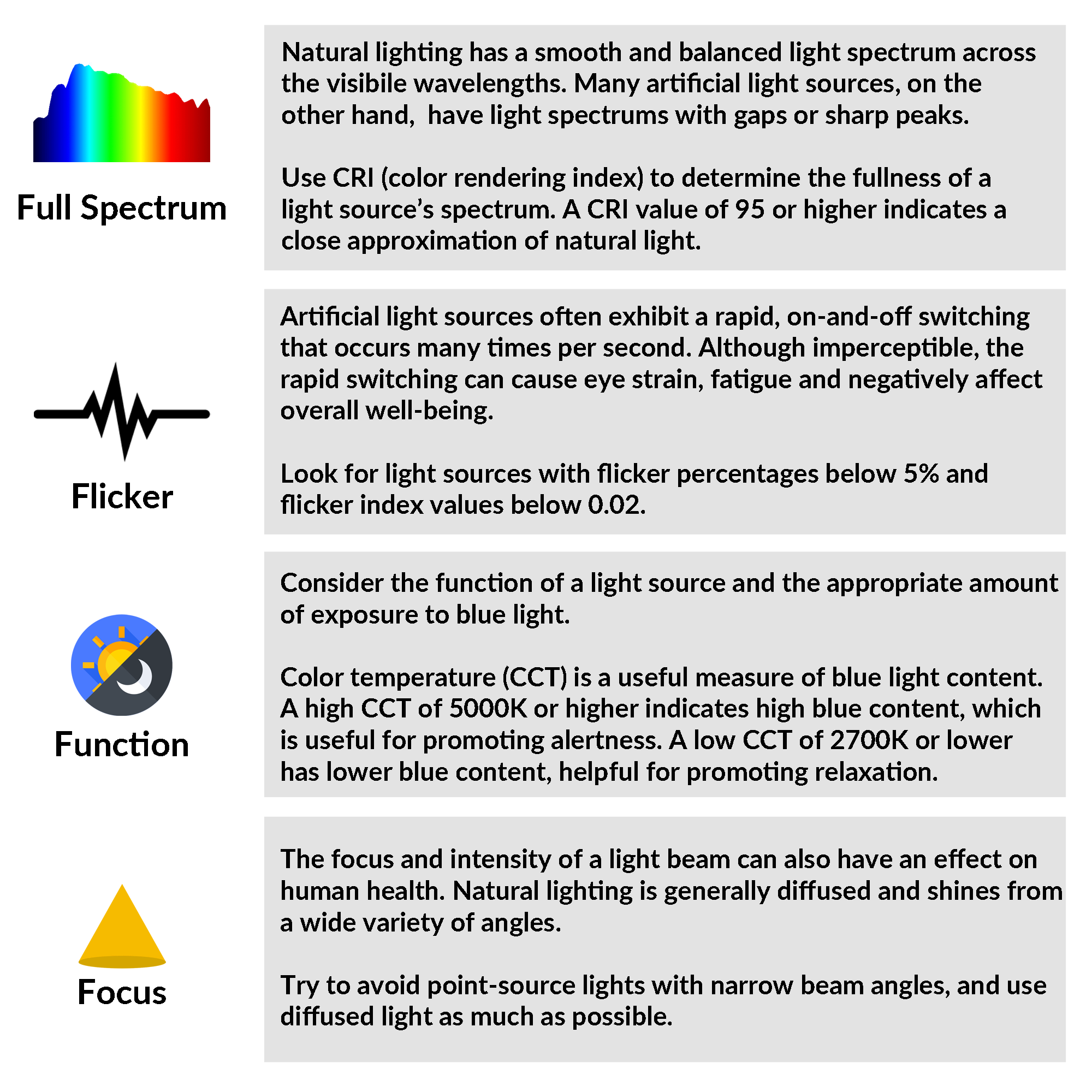
CENTRIC SERIES™ LEDs for Human Centric Lighting
Lighting as Nutrition: Is Your Light Good for You?
For the past 150 years, artificial lighting's primary focus has been on providing enough light to be able to see objects with our eyes.
Modern research suggests, however, that our bodies rely on light for far more than just vision. From regulating our sleep cycles to signaling seasonal changes, our bodies and health are far more receptive to light than we previously believed.
The same way we consider different foods to have different nutritional benefits and risks, it is important to have an understanding of what's in your lighting and how that can affect your health.


The 4 Fs of Lighting Health: Fullness of Spectrum, Function, Flicker & Focus
Generally, three aspects of artificial lighting can have an effect on your health: fullness of the light's spectrum, light flicker, and distribution/focus of light distribution. For each of these aspects, the goal is to achieve a lighting effect that most closely resembles natural light.
CENTRIC SERIES™ LED Bulbs Available
$18.00
CENTRIC DAYLIGHT™ Full Spectrum Flicker-Free A19 10W LED Bulb
$18.00
CENTRIC HOME™ Flicker-Free A19 10W LED Bulb
$18.00
SUPERWARM™ 1700K Flicker-Free A19 10W LED Bulb
$29.00
CENTRIC DAYLIGHT™ Full Spectrum Flicker-Free A21 15W LED Bulb
$29.00
CENTRIC HOME™ Flicker-Free A21 15W LED Bulb